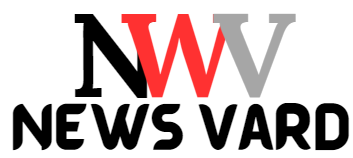In today’s fast-paced business environment, effective project management is crucial for success. One of the most powerful tools for achieving this is the Gantt chart. Developed by Henry Gantt in the early 20th century, this visual project management tool has evolved but remains vital for planning, scheduling, and executing projects efficiently. In this article, we’ll explore how Gantt charts facilitate smoother and more predictable business operations, ultimately leading to enhanced productivity and success.
Understanding Gantt Charts
A Gantt chart is a bar chart that represents a project schedule. It visually displays tasks, their durations, and the relationships between them. Each task is represented by a bar, with its length indicating the time required to complete it. Gantt charts can be created using various software tools, making them accessible to businesses of all sizes.
1. Enhanced Visualization of Project Timelines
One of the primary benefits of a Gantt chart is its ability to provide a clear visual representation of project timelines.
- Easy Task Identification: Teams can quickly see what tasks need to be completed, their deadlines, and their progress. This clarity helps prevent confusion and ensures everyone is on the same page.
- Dependency Management: Gantt charts illustrate task dependencies, allowing teams to understand how one task affects another. This is crucial for planning and helps avoid bottlenecks.
By visualizing the project timeline, Gantt charts enable teams to grasp the overall project flow at a glance, facilitating better decision-making.
2. Improved Planning and Scheduling
Effective planning is the backbone of any successful project. Gantt charts enhance planning in several ways:
- Realistic Time Estimates: By breaking down projects into manageable tasks, teams can better estimate the time required for each phase. This leads to more realistic deadlines and expectations.
- Resource Allocation: Gantt charts help managers allocate resources efficiently by identifying which tasks require specific team members or materials. This ensures that the right resources are available when needed, reducing downtime.
By providing a structured approach to planning, Gantt charts enable teams to create more accurate schedules, ultimately leading to smoother project execution.
3. Enhanced Team Collaboration
Collaboration is essential in any project, and Gantt charts promote teamwork in various ways:
- Shared Understanding: When team members can view the same Gantt chart, they develop a shared understanding of project goals and timelines. This fosters accountability and ensures that everyone is working towards the same objectives.
- Communication Facilitation: Gantt charts can serve as a central point for communication. Teams can use them to discuss progress, challenges, and changes, making it easier to stay aligned throughout the project lifecycle.
By improving collaboration, Gantt charts contribute to a more cohesive team environment, which is vital for project success.
4. Effective Monitoring and Tracking
Monitoring project progress is essential for ensuring that it stays on track. Gantt charts facilitate this by:
- Progress Tracking: Teams can easily update Gantt charts to reflect task completion, providing a real-time view of the project’s status. This allows managers to identify delays or issues early, enabling timely interventions.
- Adjusting Plans: If unexpected challenges arise, Gantt charts allow for quick adjustments to the project schedule. Managers can reallocate resources, extend deadlines, or modify tasks as necessary to keep the project moving forward.
With effective monitoring and tracking, Gantt charts help businesses maintain control over their projects, leading to more predictable outcomes.
5. Anticipating and Managing Risks
Every project comes with its share of risks. Gantt charts aid in identifying and managing these risks through:
- Visualizing Dependencies: By understanding task dependencies, teams can better anticipate potential delays caused by one task affecting another. This foresight allows for proactive risk management strategies.
- Scenario Planning: Gantt charts can be used to simulate different project scenarios, helping teams understand how changes in timelines or resources might impact overall project success.
By enabling teams to anticipate risks, Gantt charts contribute to more predictable business operations.
6. Streamlined Reporting
Gantt charts simplify the reporting process by providing a visual representation of project progress.
- Stakeholder Updates: Gantt charts can be easily shared with stakeholders, providing a clear overview of project status without requiring extensive written reports. This fosters transparency and keeps stakeholders informed.
- Performance Analysis: After project completion, Gantt charts serve as valuable tools for analyzing performance. Teams can review timelines, task completion rates, and resource utilization to identify areas for improvement in future projects.
By streamlining reporting, Gantt charts enhance accountability and facilitate continuous improvement within organizations.
7. Enhanced Customer Satisfaction
Ultimately, the effective use of Gantt charts can lead to increased customer satisfaction. By delivering projects on time and within scope, businesses can:
- Build Trust: Clients appreciate timely and reliable project delivery, which builds trust and fosters long-term relationships.
- Meet Expectations: By managing timelines and resources effectively, businesses can ensure that they meet or exceed client expectations, enhancing their reputation in the market.
By contributing to smoother project execution, Gantt charts play a pivotal role in delivering quality results that satisfy clients.
Conclusion
In conclusion, Gantt charts are invaluable tools for facilitating smoother and more predictable business operations. By enhancing visualization, improving planning and scheduling, promoting collaboration, and enabling effective monitoring, Gantt charts empower teams to execute projects more efficiently. Moreover, by anticipating and managing risks, streamlining reporting, and ultimately enhancing customer satisfaction, Gantt charts contribute to the overall success of organizations.
For businesses looking to improve their project management processes, adopting Gantt charts can lead to significant improvements in productivity, efficiency, and project outcomes. By harnessing the power of this visual tool, companies can navigate the complexities of modern project management with confidence.
SEO Tips for Ranking Your Website
To improve your website’s ranking with this content, consider the following strategies:
- Keyword Optimization: Use relevant keywords such as “Gantt chart benefits,” “project management tools,” and “improving business operations” throughout the article.
- Engaging Titles and Headers: Use clear, descriptive titles and headers to improve readability and SEO.
- Internal and External Links: Link to relevant internal pages and credible external sources to enhance authority and navigation.
- Mobile Optimization: Ensure your website is responsive and mobile-friendly to cater to all users.
- Visual Content: Include images or infographics illustrating Gantt charts and their benefits to enhance engagement.
By implementing these strategies, you can create valuable content that not only helps readers understand the benefits of Gantt charts but also improves your site’s visibility in search engines.





